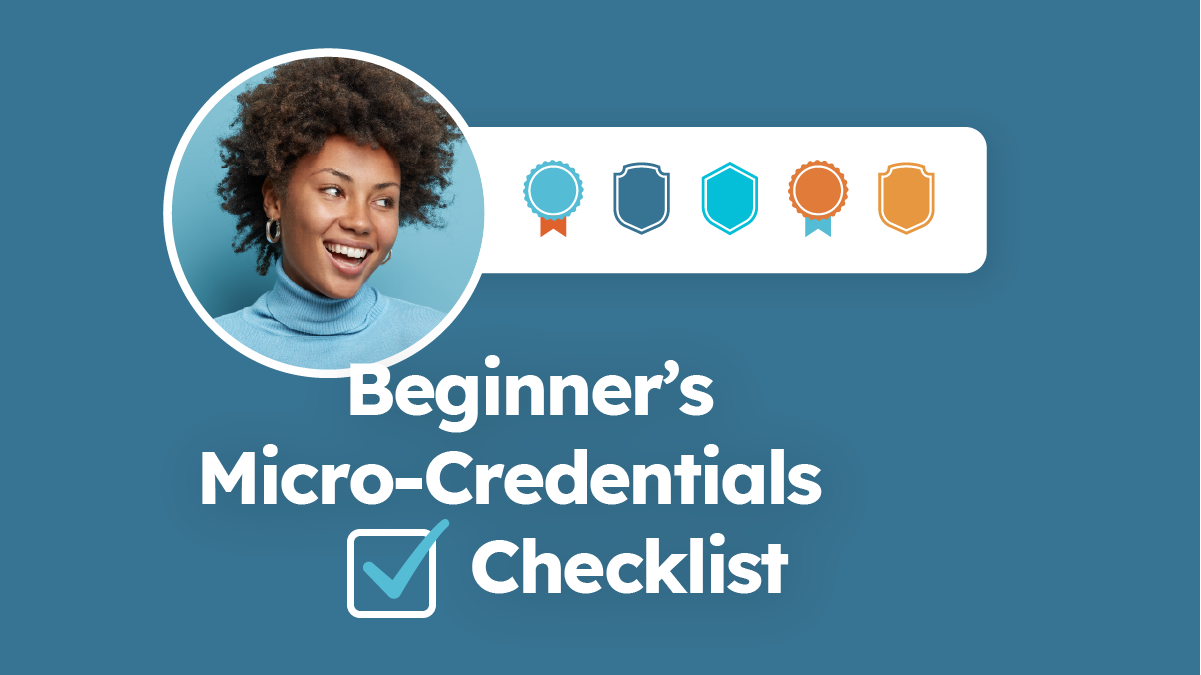Micro-credentials: a beginner’s checklist
Micro-credentials: a beginner’s checklist

Ready to set up some micro-credentials for your learning program? Maybe hoping to streamline, update, or change up the ones you’re providing? Or does the term micro-credential send you into a spiral of confusion, apprehension, and anticipated exhaustion?
All valid reactions – except that last one, we don’t want you to feel that way.
Before we share the how, let’s quickly break down the what: What is a micro-credential?
Micro-credentials are rewards or recognition for a very specific set of skills, abilities, or scope of knowledge. Think of them as bite-sized portions of a larger credential, certification, or learning program. Want to level up on leadership or a new technology at work? Need to keep current on a procedure or specification in your industry? Complete a micro-credential, and ta-da! Achievement unlocked.
So let’s make this easy. Here’s a checklist (a real one – not just a list of nice-to-have’s or general industry advice that you download, skim over, and say, “Ugh, there’s nothing here, I’m taking an early lunch”). Now you’ll have an exact set of tasks to set up any micro-credential.
Stuff you’ll need:
- LMS or eLearning platform
- Outline for your course or credential (things like the skill/task to complete, a relevant video or screenshots, maybe some quiz questions)
- Brand materials (think logo files, brand colors, and maybe a cool badge icon for when people finish your micro-credential)
- Trust that this is not just another checklist with literally no action items to act on by the end (there totally will be)
Ok, here comes the checklist!
1. Define your skill/task/ability (AKA your micro-credential).
This is the strategy portion of any project that sounds exciting when you’re chatting with colleagues and then becomes an absolute bear when you sit down to firm up plans. But it’s important – whether you’re parsing out smaller wins in an existing certificate program or building a new course from scratch. Take time to make sure you’ve outlined the objective and materials (hopefully you gathered most of this based on the stuff you needed list above – look at that!) Another big one: who will take this micro-credential?
2. Know your learners.
Are they recertifying and need this micro-credential to keep momentum going? Are they new members and hoping to get a leg up in the industry with a quick win? Are they balancing a profession and home life and burgeoning side gig in badminton and need to learn on-the-go? Answer a few of these questions and include it in your definition (that was step 1 above).
3. Pick your platform, pick your people.
Here’s the part where you might have to talk to other people – don’t worry, they will be helpful. You’ll need a platform to launch and host your micro-credential (most LMS or eLearning platforms do the trick- bonus if you already have one) and colleagues who can keep things moving along (content creation, communications, analytics, verification – maybe all those roles are on your plate – if so, we get it. And you’ve got this).
4. Check your work.
We know – this one feels a little soft, but all the great teachers/editors out there are shouting “Yasss” right now. Collect all your great materials, cross-check with your original outline, review with your colleagues (and maybe an industry expert), then ask the ultimate question: does this still serve our learners?
5. Roll it out.
It’s prime time! Perhaps you load everything up and start sharing the micro-credential with the whole (applicable) world. Another idea: include in your communications a few different learning pathways. This means your leaners can take the course standalone, or perhaps bundle or roll it into another program, or even pause and come back to it. Options.
6. Badge bragging galore.
Give your learners plenty of display options for when they complete the micro-credential and want to show off their new badge with pride. Integrate with a certification engine, like Credly or Badgr, and provide your own in-house badge they can share on social platforms. Hot tip: not all good things last forever. If this is something that expires or needs to be renewed, build that into your micro-credential and badge as well.
7. Rinse and repeat.
For the micro-credential, that is (and maybe take a shower – you’ve been working really hard). Iteration is the spice of life, so don’t be afraid to freshen up the course with different materials, communications, or targeted learners. Meaning…back to step 1 (we love a nice lifecycle checklist).
Wanting a bit more info?
Good for you! See below for some of our go-to resources:
- Institute for Credentialing Excellence’s micro-credentialing toolkit: https://www.credentialingexcellence.org/Resources/Microcredentialing-Tool-Kit
- More about open badges from IMS Global: https://openbadges.org/
- EdSurge opinion piece on putting learners first when jumping on the micro-credentials bandwagon: https://www.edsurge.com/news/2019-10-31-as-the-microcredential-market-booms-don-t-forget-the-learner



